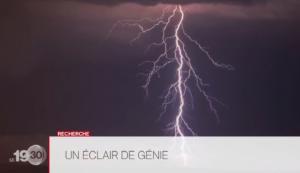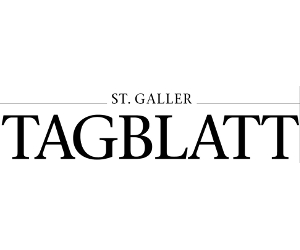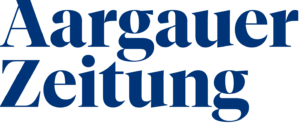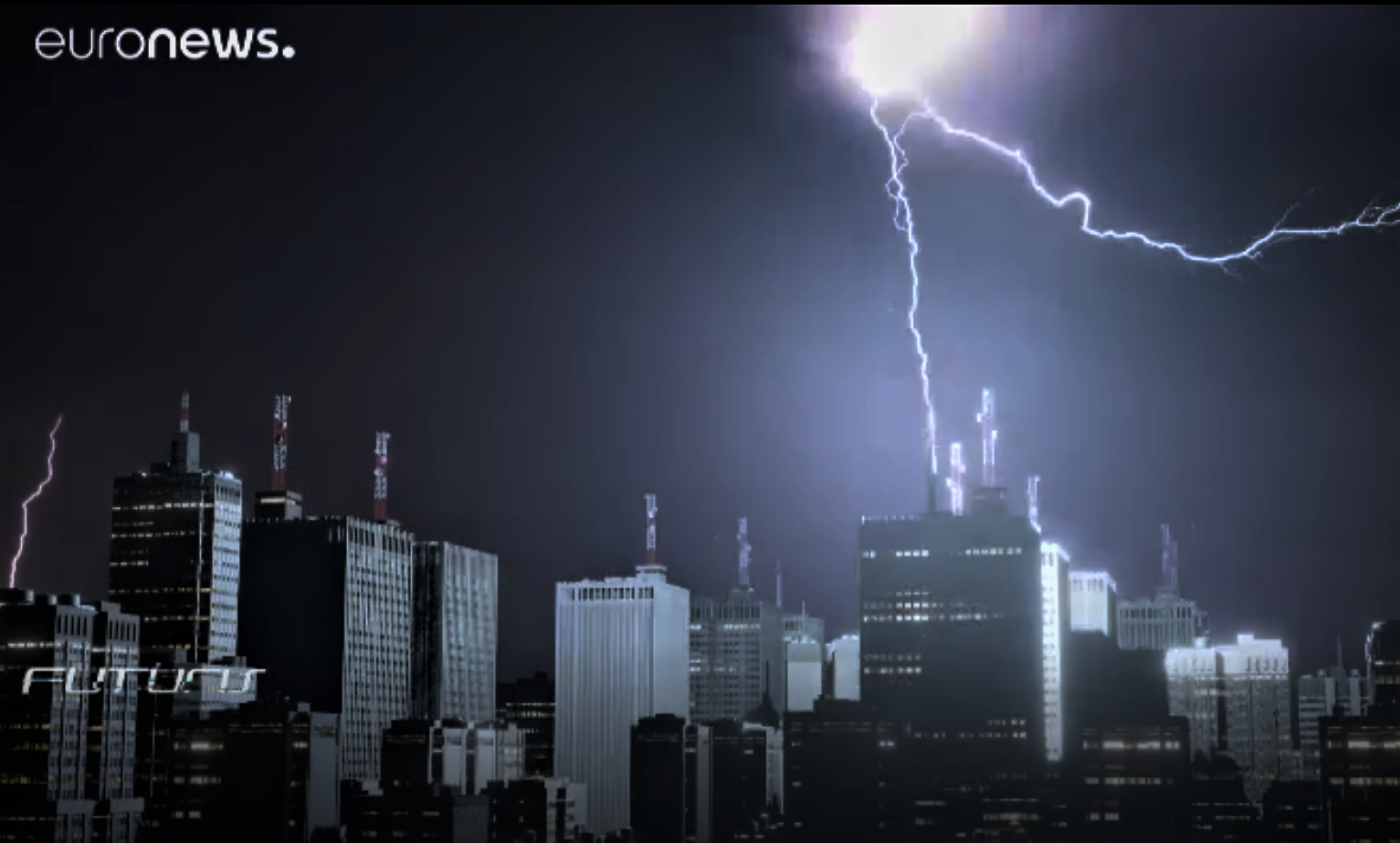T. Produit, P. Walch, G; Schimmel, B. Mahieu, C. Herkommer, R. Jung, T. Metzger, K. Michel, Y.-B. André, A. Mysyrowicz, A. Houard, J. Kasparian, J.-P. Wolf, Optics Express 27, 11339 (2019) link
Abstract: We study the use of frequency upconversion schemes of near-IR picosecond laserpulses and compare their ability to guide and trigger electric discharges through filamentationin air. Upconversion, such as Second Harmonic Generation, is favorable for triggering electricdischarges for given amount of available laser energy, even taking into account the losses inherentto frequency conversion. We focus on the practical question of optimizing the use of energy froma given available laser system and the potential advantage to use frequency conversion schemes.


 Article in L’Express
Article in L’Express Article in Photonics Media,
Article in Photonics Media,  A few words to thank JP. Wolf for his participation in the CQFD program on the topic: “Un paratonnerre laser pour diriger la foudre” on March 17, 2020.
A few words to thank JP. Wolf for his participation in the CQFD program on the topic: “Un paratonnerre laser pour diriger la foudre” on March 17, 2020. Article in St. Galler Tagblatt,
Article in St. Galler Tagblatt, Article in Aargauer Zeitung,
Article in Aargauer Zeitung, rticle in Technology Review “Der Blitz-Auslöser”
rticle in Technology Review “Der Blitz-Auslöser” 